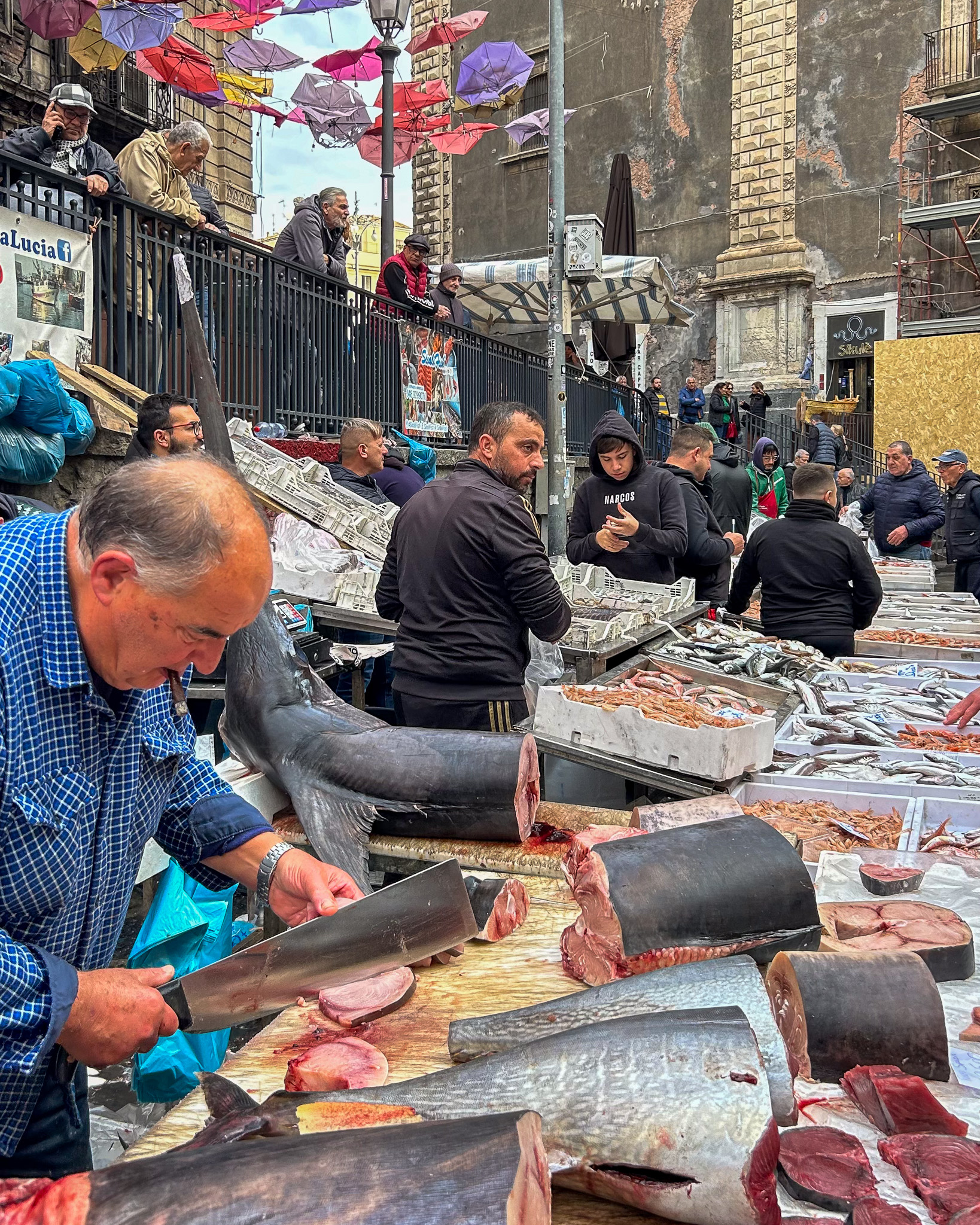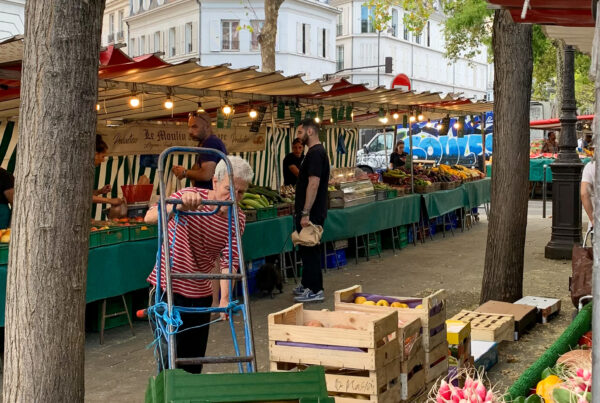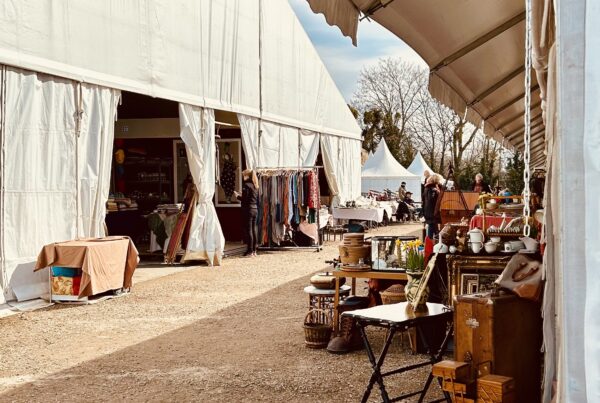The markets in Catania serve as the perfect starting point for getting a glimpse into the culinary underbelly of the ancient port city. My recent trip to Sicily’s east coast had me take an introspective look at the changing fish market, La Pescheria, the ongoing emigration of young Sicilians, and the innovative spirit, rooted in Sicilians love for food, that remains at Piazza Scammacca, a vibrant new metropolitan market.
by Hajni Nagy
Nostalgia at La Pescheria
Catania’s world-famous fish market, La Pescheria, consistently tops the charts of the city’s must-visit spots. Even on the grey Saturday I visited in early February, the market was a sight to behold. La Pescheria is a good starting point for getting to know the city. Beyond its central square where the fishmongers set up shop every day, the market sprawls into adjacent streets, offering fruits, vegetables, cheese, meat, and more.
Catania is not a love-at-first-sight type of Italian city. Described by Alexander Lucie-Smith, the author of The Chemist of Catania and a Substack newsletter with the same name, unlike Florence and Venice, [Catania] has not been gentrified. It is a rough port city, poor in many parts, severely run down, squalid even, but real and beautiful.
To get the most out of my visit, I decided to explore the markets in Catania with a private guide. My guide, Giusy, expertly navigated me through the market vendors, showing me fish and shellfish in all shapes, colours, and sizes. Here, the seafood is so fresh it’s often still alive in which case the vendors will be happy to offer you advice on how to change that. An octopus might have heard my guide explaining the method of dipping them into boiling water three times and attempted to escape before the vendor gently placed it back on the table. It’s not for the faint of heart.
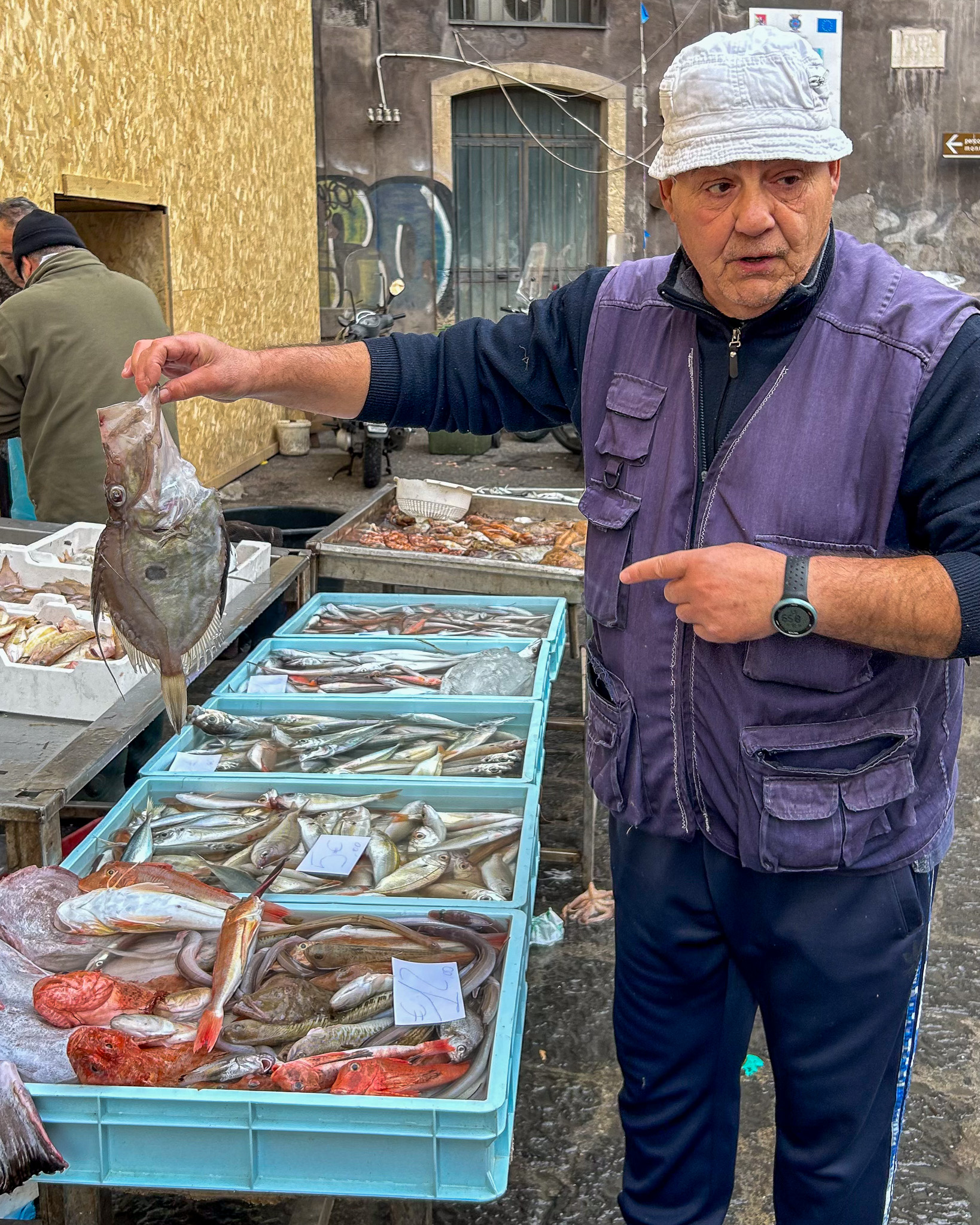
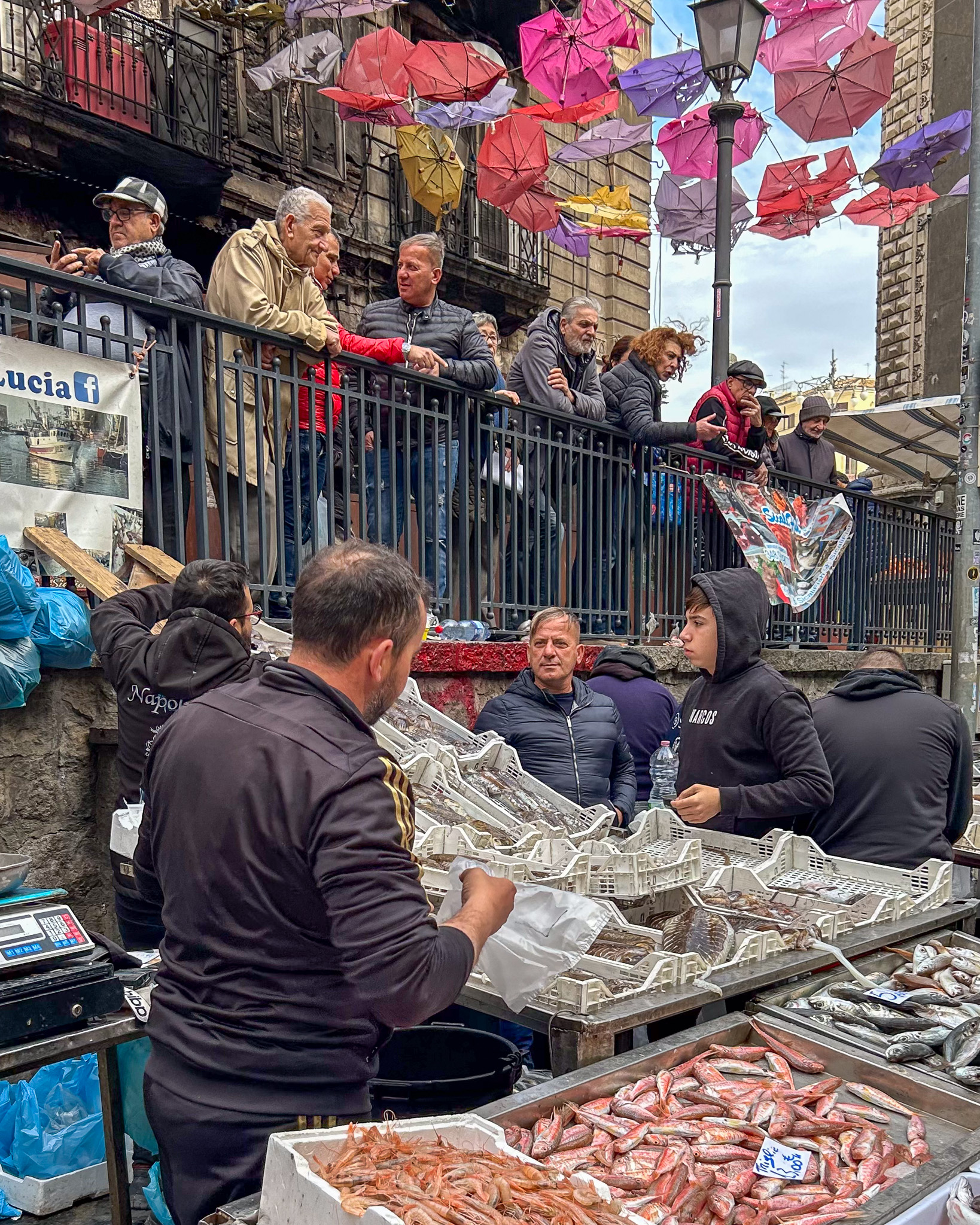
I don’t know if it was the overcast sky, the unhurried low season crowds or the aging vendors, but I couldn’t help but feel a sense of nostalgia, an overwhelming feeling of stumbling upon something ancient slowly slipping away. This feeling was echoed by my guide and some of the vendors we stopped to chat with. Traditional butcher shops are gradually morphing into restaurants catering primarily to visitors, rather than supplying locals with essential ingredients for their meals. La Pescheria is evolving into a tourist spectacle with street food curated for our phone screens rather than our bellies.
Modern influences have also found their way into the market in unexpected ways. Some fishmongers now use their smartphones to livestream the market’s hustle and bustle on TikTok, offering glimpses of Catania’s authentic charm to audiences worldwide. But our urge to observe locals and share these scenes on social media won’t save the market. At its core, the market is not for tourists, but for locals and only survives in its current form if regulars keep coming back.
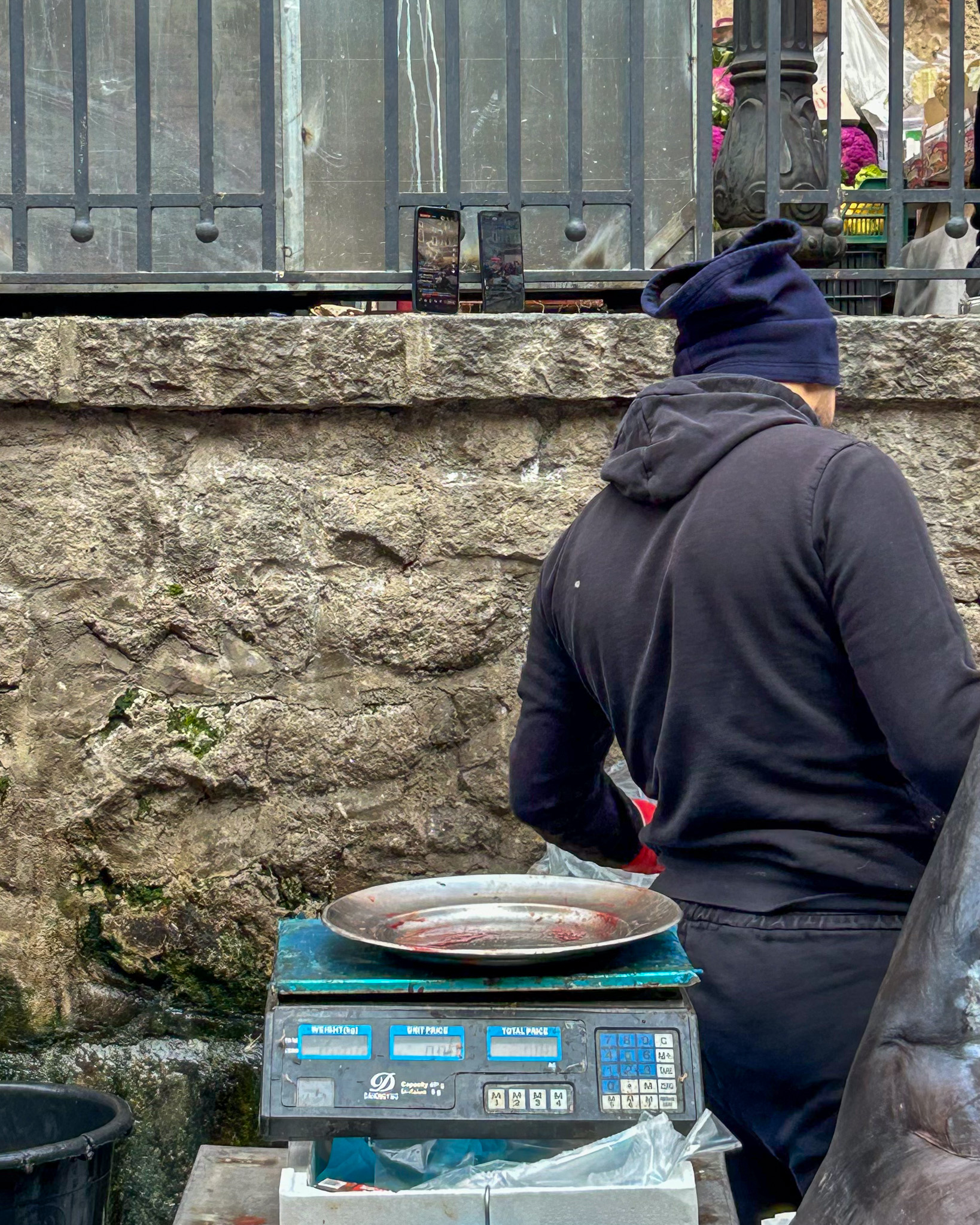
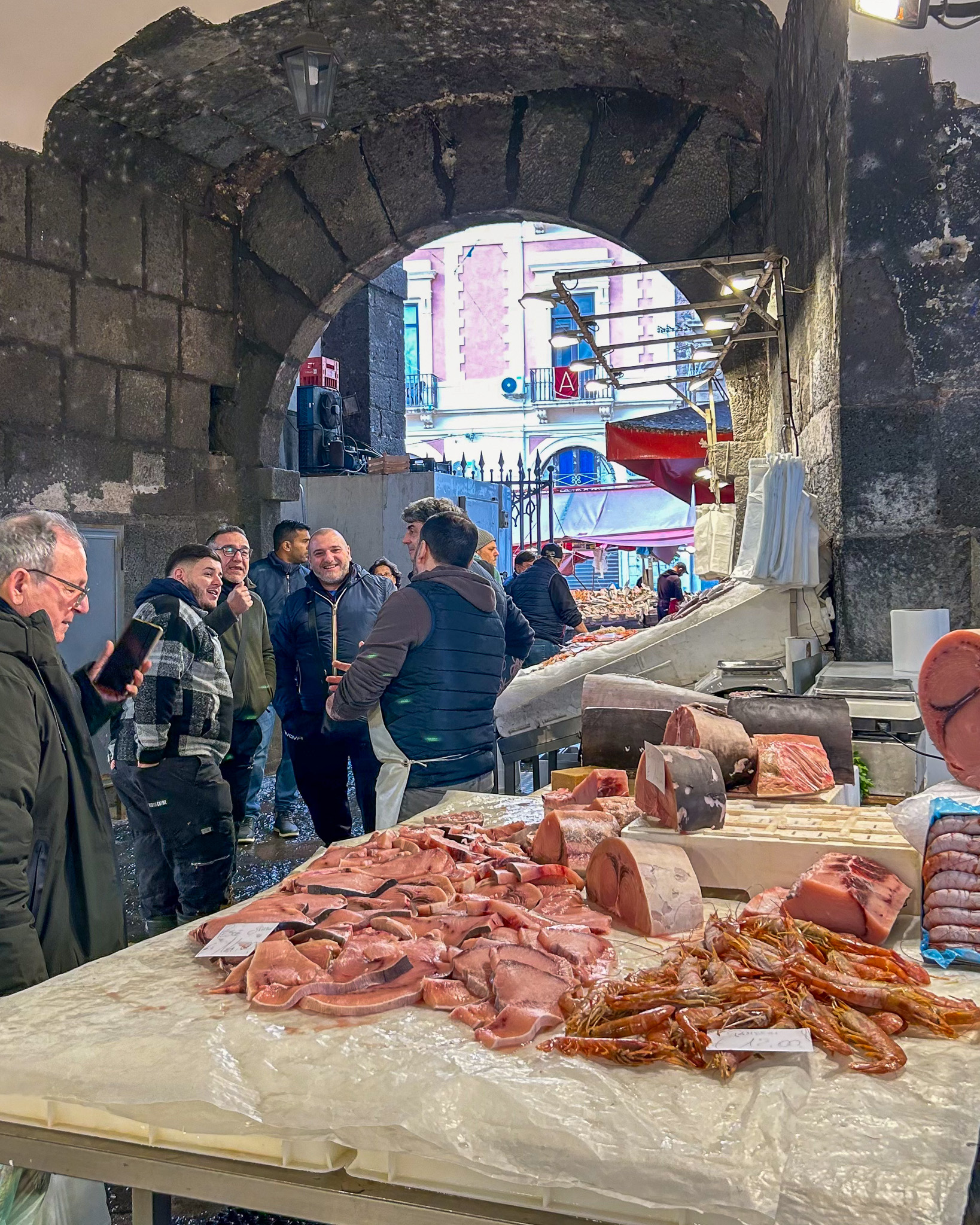
La Pescheria is the perfect place to sample Sicily’s iconic cuisine. With Giusy’s guidance, I embarked on a gastronomic journey, starting with a taste of tripe. A delicacy cherished by locals is now only available at a single vendor, who is visited by chefs from across Catania. Don’t let the presentation discourage you, if you’re an adventurous eater, give it a try!
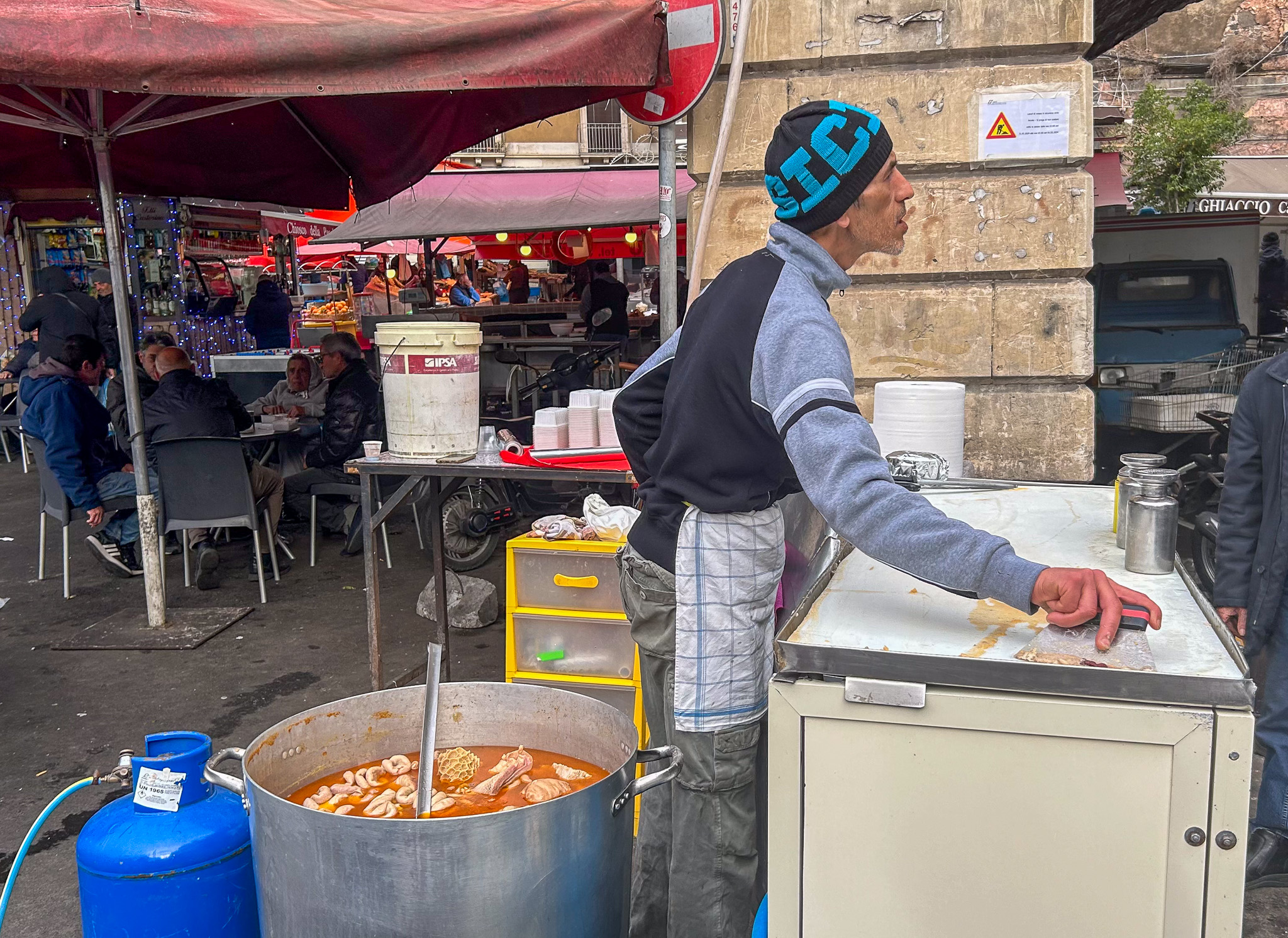
Next up was seltz, a local drink made with combining soda water, lemon and sea salt. It might sound like an odd combination, but the sea salt helps to neutralize the acidity of the freshly pressed lemon. I imagine it’s the perfect way to rehydrate on a hot summer day.
At one of the shellfish stands I sampled French oysters which were super fresh with a delicate salty taste of the sea and a little sweeter than those you’ll find at French markets. The smaller, round local oysters had a chewier texture with an even better taste.
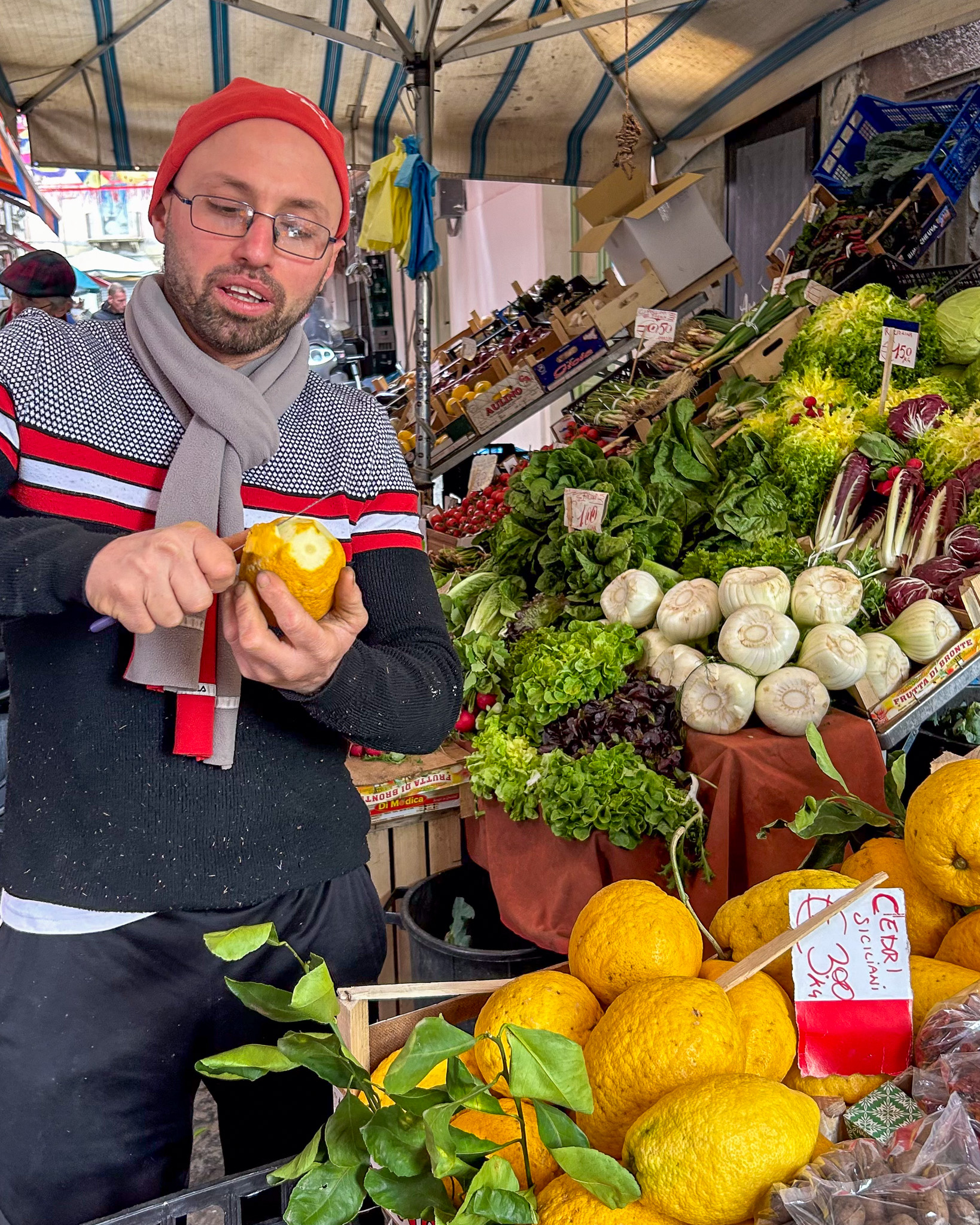
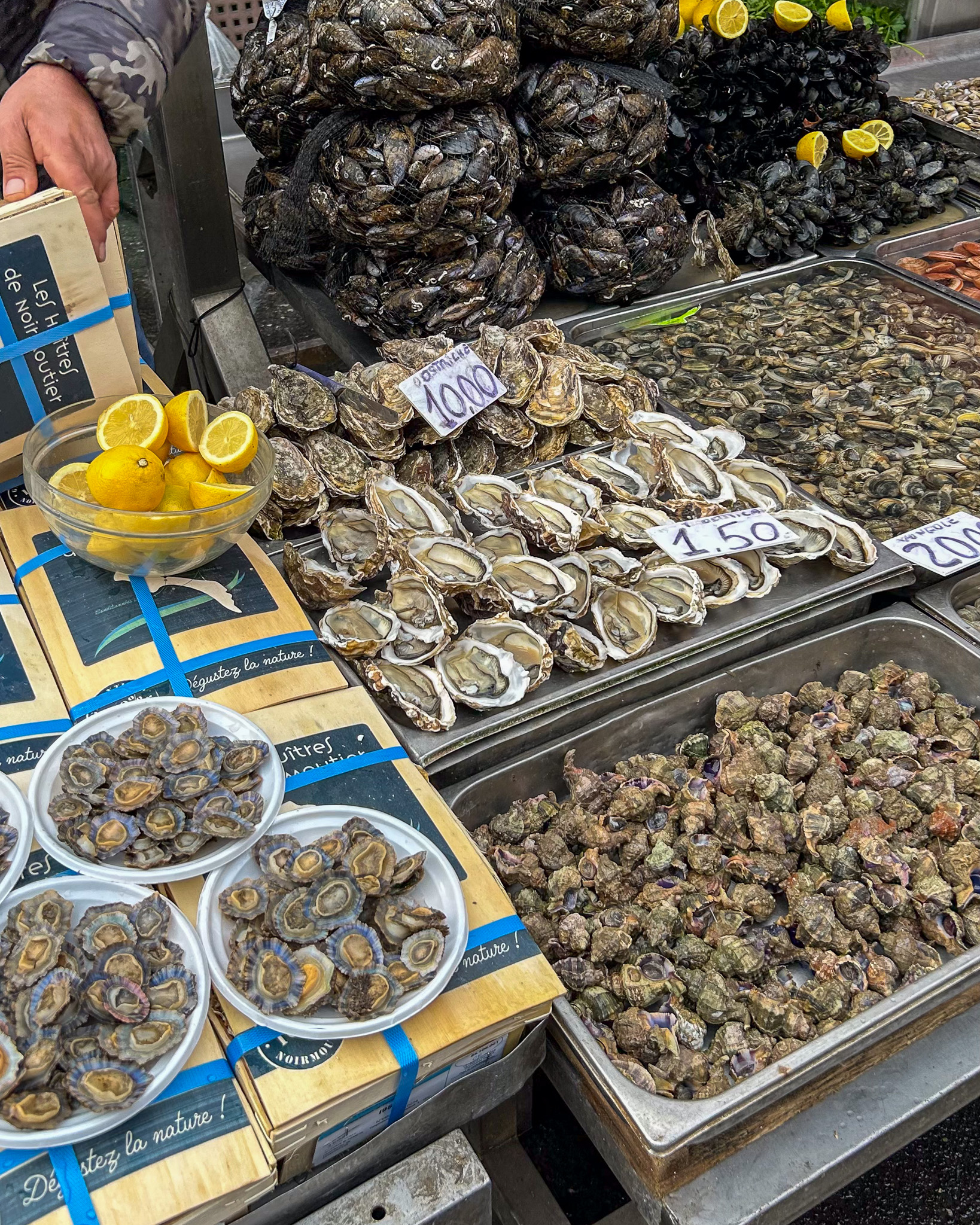
The fresh fruit and vegetables on offer at the market are spectacular even in the winter. Although no longer in season, I managed to try an orange prickly pear. It was sweet with a hint of tanginess, reminiscent of a cross between watermelon and pear. I also had a slice of the huge Sicilian lemons called citron, or cedri in Italian. The vendor kindly peeled it for me to reveal a thick layer of pith (the white part) that, sprinkled with sea salt, is actually the tastiest part of this varietal. I marvelled at the huge heads of intense purple cauliflowers and the aroma of roasted artichokes filled the air.

There’s no shortage of local cheeses at Salumeria Patti, a cheese shop at the market also selling dry sausages and olives. My favorite was the smoked aged ricotta.
Another memorable encounter was at Le Delizie di Maurizio e Gaetano, selling dried fruit, nuts, legumes and spices. The owner has an oven in the back of his shop to roast and dry his merchandise. He handed me a handful of roasted almonds straight out of the oven and a dried fig, made me take a bite of the fig and then push some dried almonds into the flesh of the fig – talk about a taste explosion! It’s one of those instances when 1+1 makes 3, a flavour we’re losing, according to the vendor. The shop has been in his family for generations, but his kids are not interested in taking it over. They’re both living in London.
Piazza Scammacca, a metropolitan market concept
This is a modern tale you’ll hear more often in Sicily. The destination we dream about all year round is also a place so many young Sicilians are reluctantly leaving behind in search of better opportunities in Northern Italy or Western Europe. Emigration has long been a part of Sicily’s history, over a million Sicilians leaving for the New World in the 19th and 20th century.
A beautiful tribute is exhibited at Piazza Scammacca, a metropolitan market in the heart of Catania. Titled Bel Paese Volo Via (Beautiful Country I Fly Away), the paper-mache giant made by artist Matteo Raciti depicts a young man flying with tears running down his cheeks.
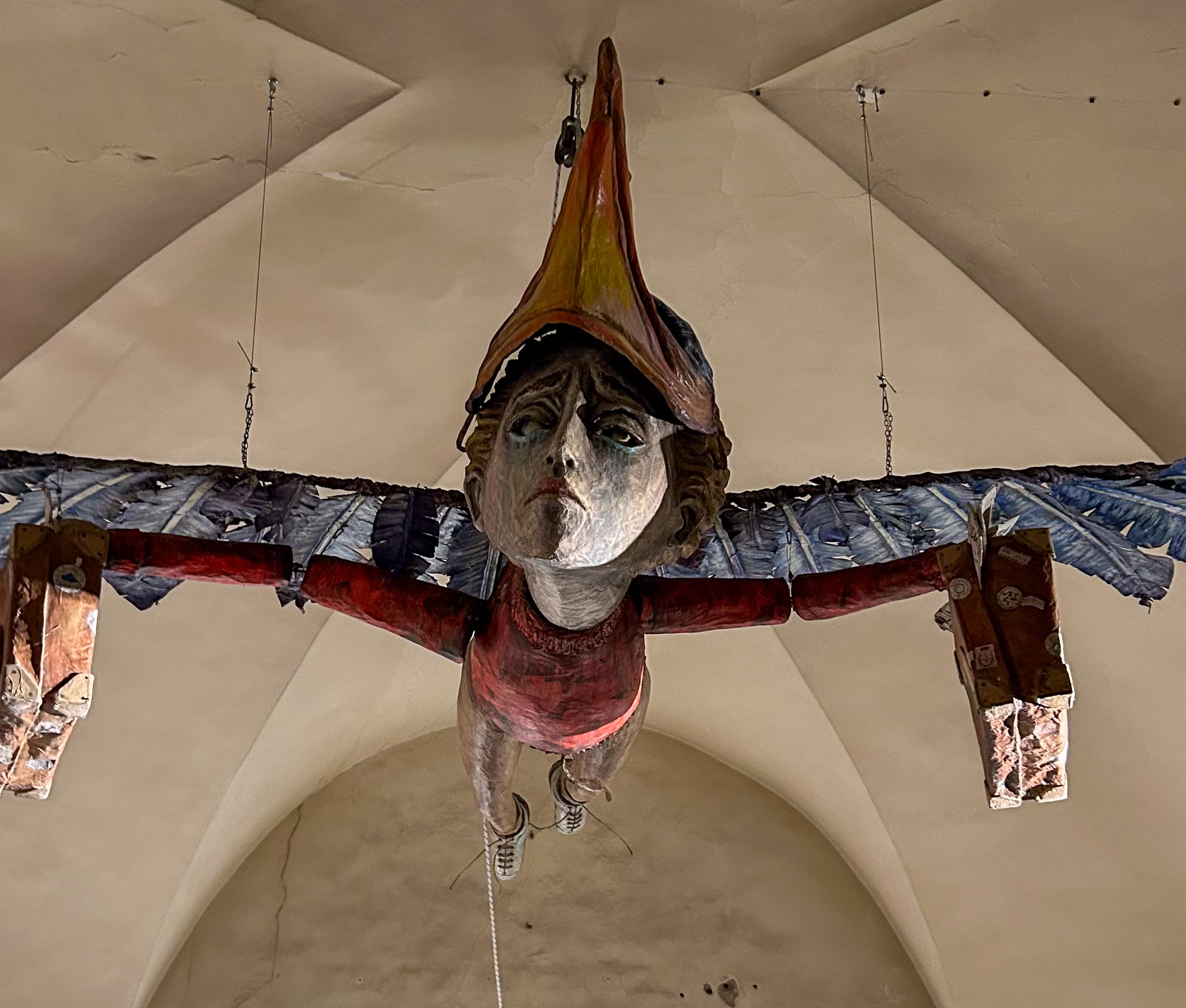
You can dine well in Catania, there is no shortage of restaurants around town serving authentic Sicilian cuisine. mm!! Trattoria, Me Cumpari Turiddu, Osteria Antica Marina, are just a few offering up a traditional fare with a modern twist here and there. But the natural-wine-small-plates restaurant concept that has Paris and Amsterdam (and me) in its chokehold has seemingly not yet made its way over to the Mezzogiorno. Piazza Scammacca is just what I was looking for.
Situated in the building of a 17th century church, Piazza Scammacca opened in 2022. It is home to 7 independent restaurants, each with its own counter, just like a market. Here, you can sit down and order from any menu – whether it’s pizza, pasta, seafood, sandwiches, barbecue, cocktails, or wine – then pay for everything together.
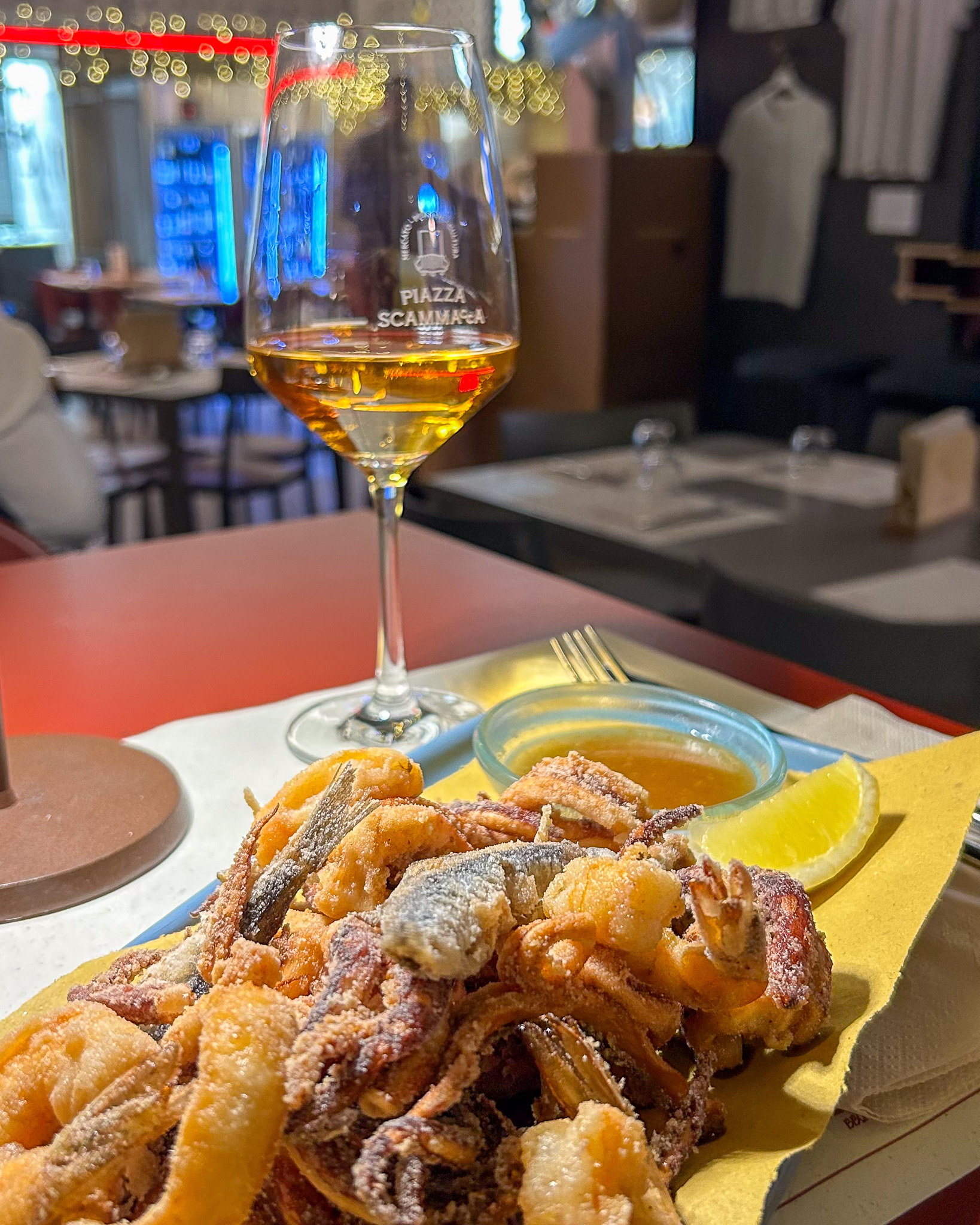
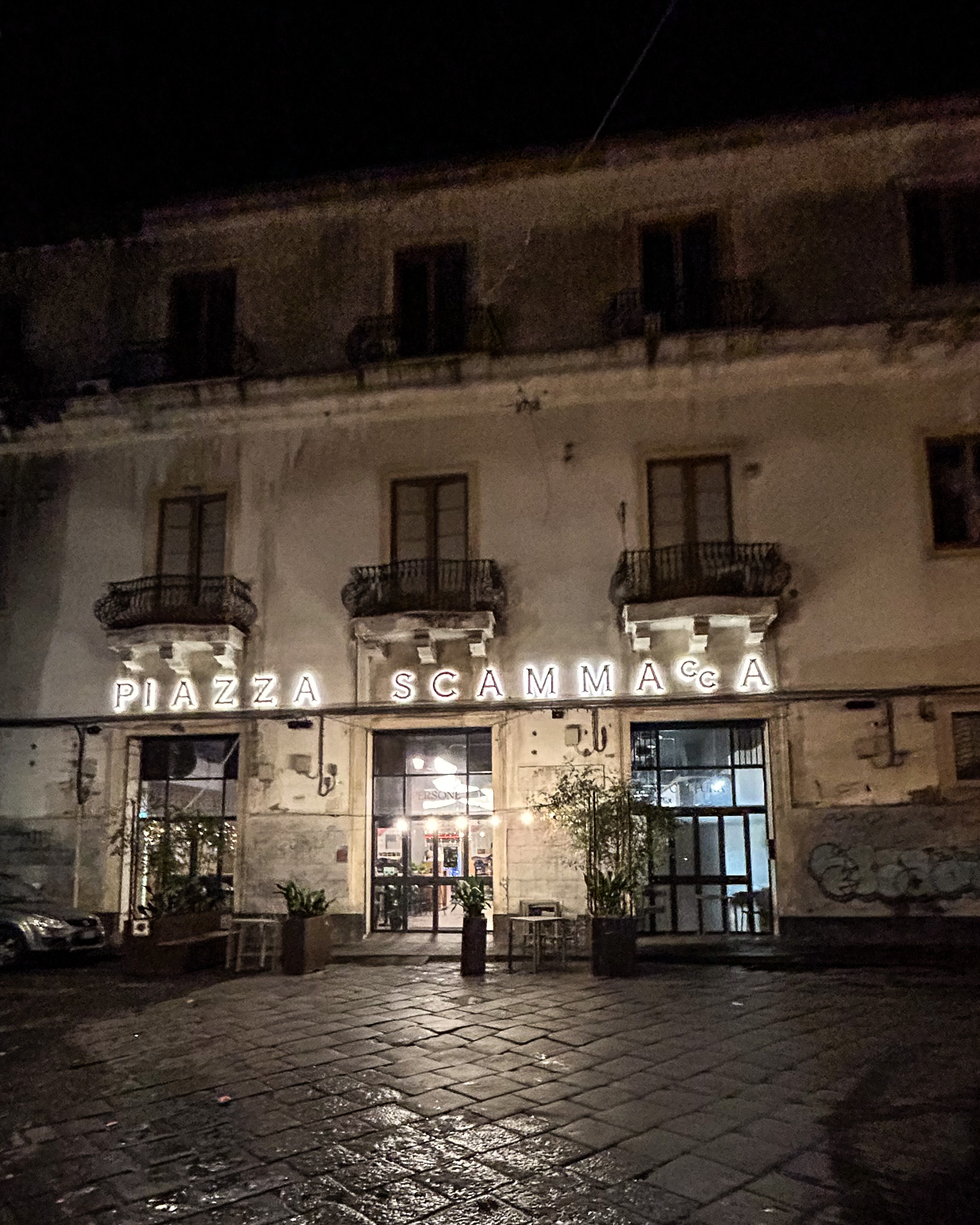
I had the mixed fried fish served with a sweet and sour sauce from Mareide and washed it down with a glass of orange wine from La Cantina. The staff was super attentive and took good care of me as a solo diner. They were kind enough to give me a tour of the premises, including the rooftop that is not yet open to the public. When I exited the little stairway leading up there, I audibly gasped at the sight of the most gorgeous view of central Catania and its many churches, spread out like jewels against the night sky. I have no doubts that once they get all the necessary permits in order, this will be the coolest hangout spot in all of Catania.
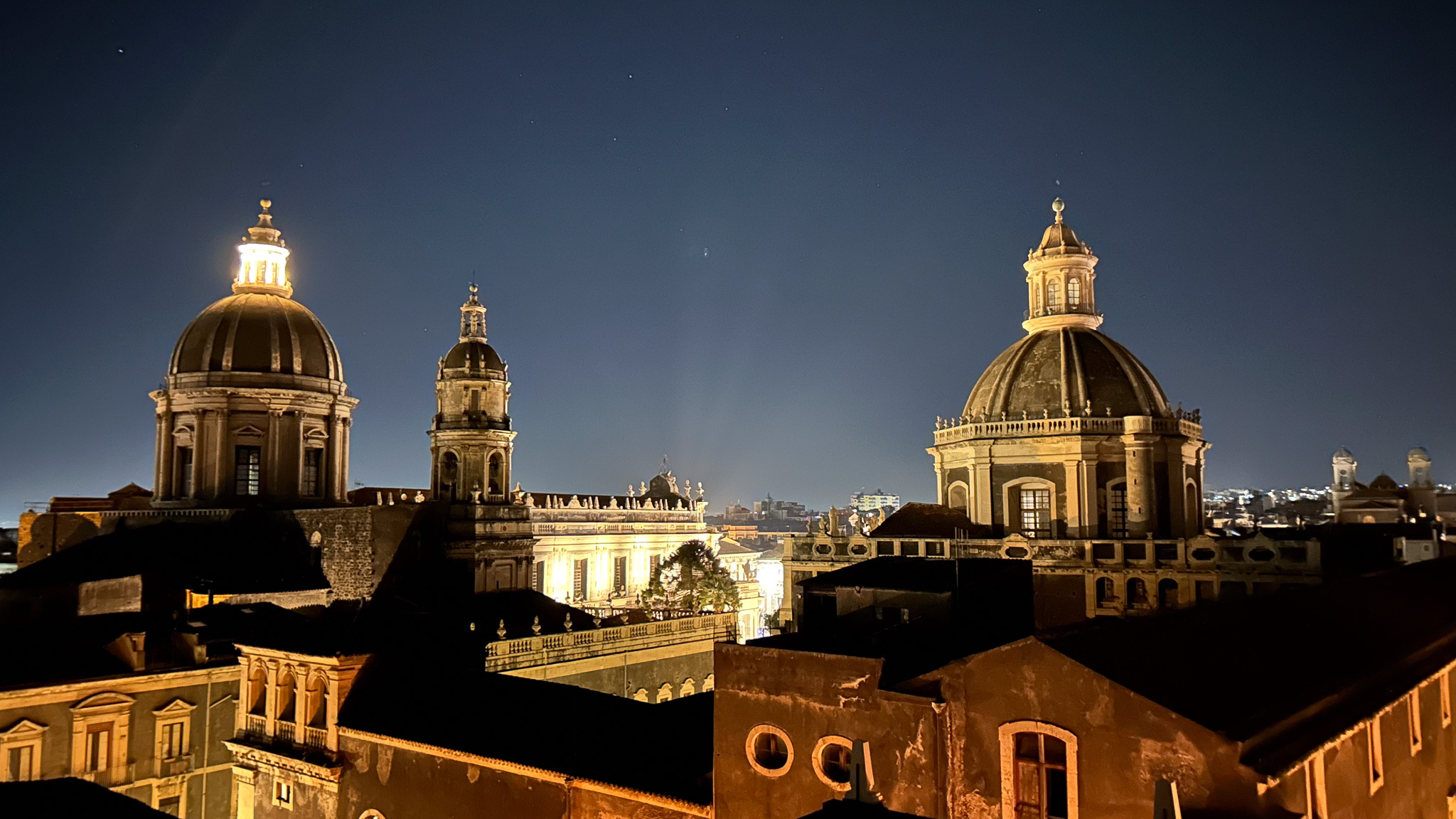
Fera O’Luni: A market for the locals
While La Pescheria may appear to be the primary marketplace in Catania, it’s situated a bit further away for locals living in the city’s residential areas. Instead, the Catanese frequent Fera O’Luni, a huge daily market offering a plethora of goods. Here, one can find household items, fresh produce, seafood, cheese, meat, clothes, designer shoes (ranging from authentic to counterfeit), and even a selection of second-hand stalls selling everything from vintage fur coats to 90s ski overalls.
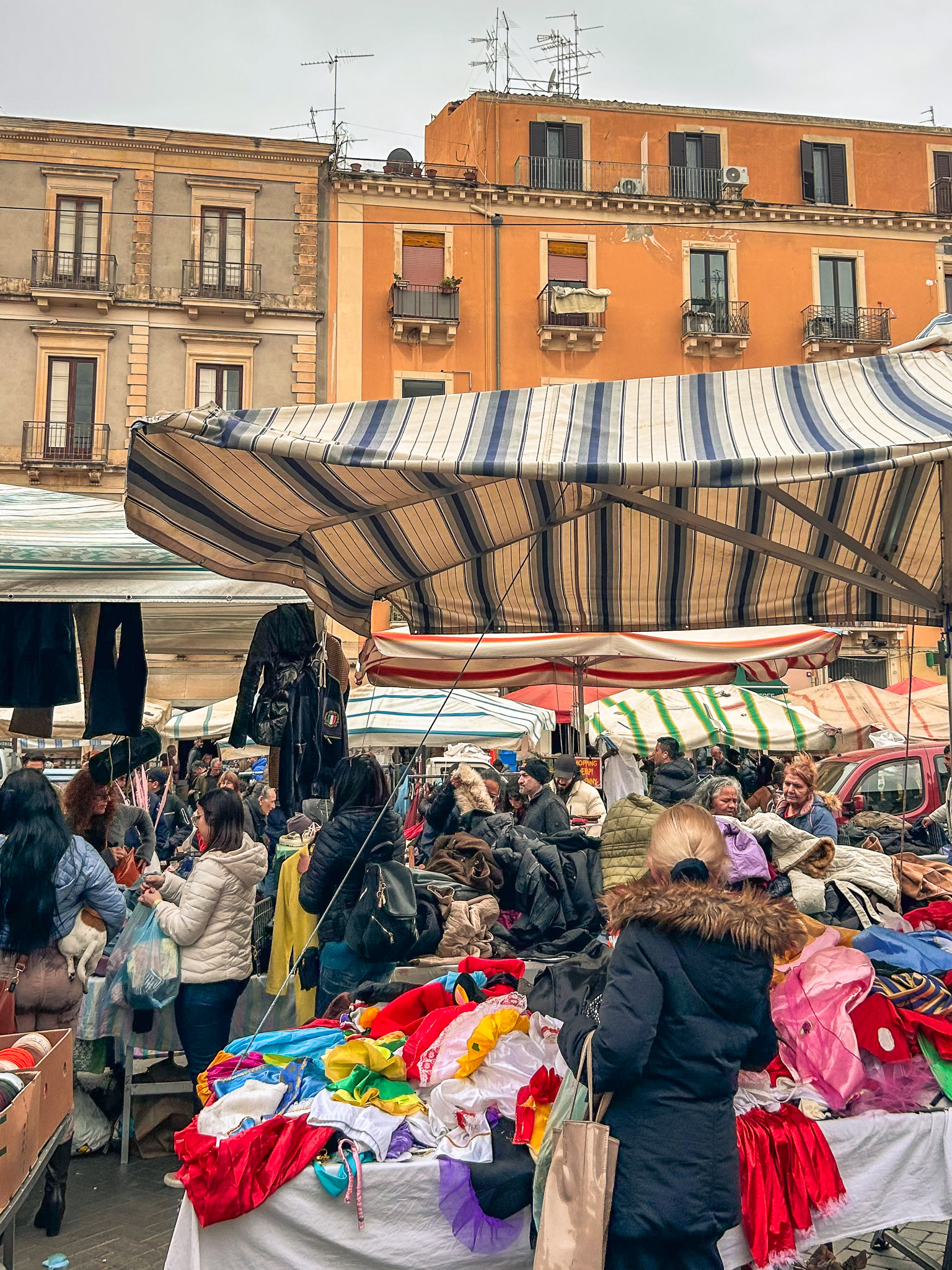
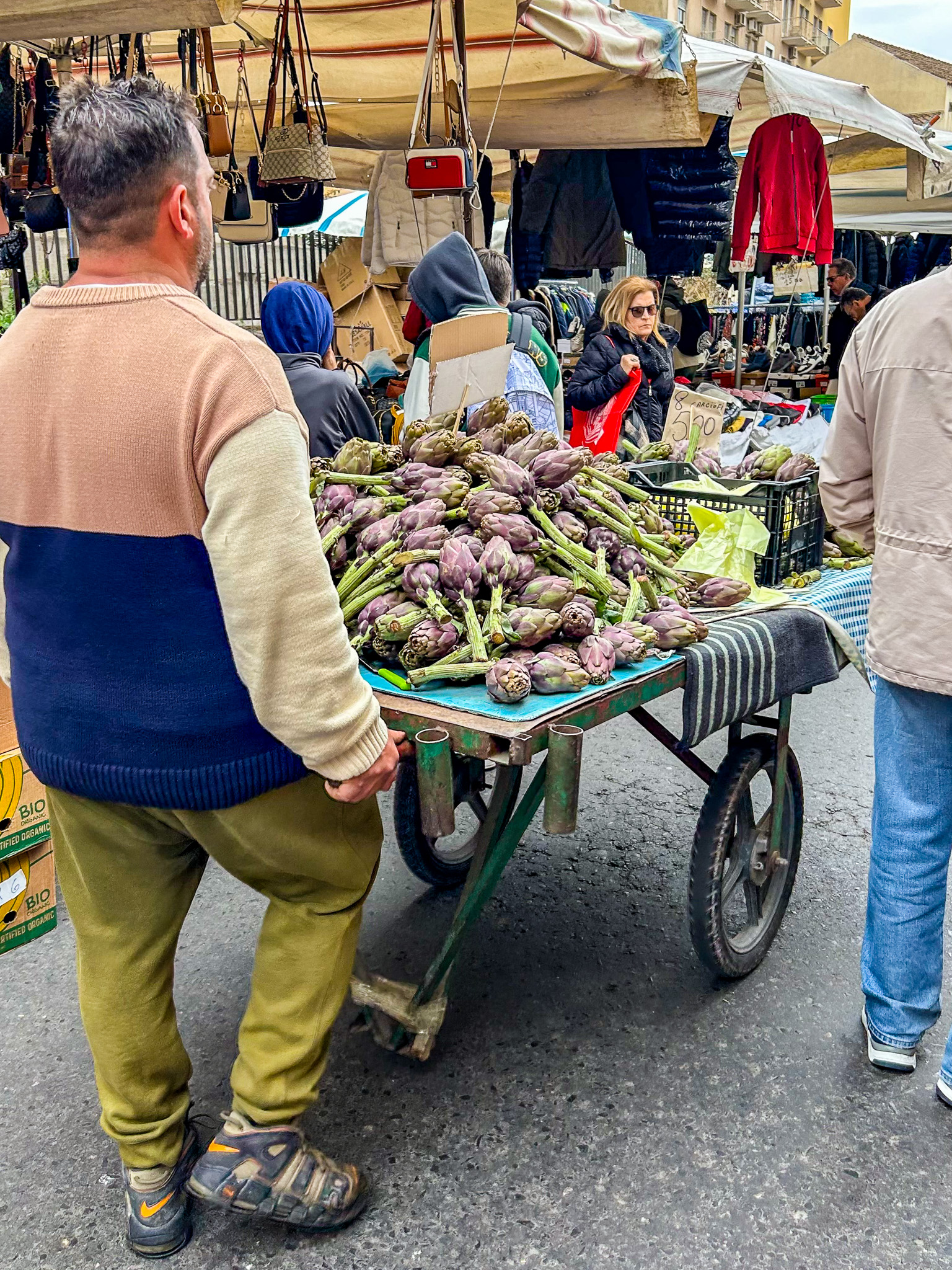
The flea market that got away
Catania’s patron saint is Sant’Agata, a Sicilian noblewoman renowned for her refusal to marry a Roman official, ultimately leading to her torture and martyrdom. She’s loved, celebrated, and ever-present in the daily life of Catanians. Though I’m not particularly religious, I found myself asking for sunny weather after a gloomy day. Sant’Agata granted my wish, albeit preceded by torrential rain.
This downpour coincided precisely with my journey to the Sunday flea markets in Catania, lasting only thirty minutes yet causing streets to flood. Undeterred, I kept on walking, skipping over ankle-deep puddles, but my efforts were thwarted as the final and only road leading to the market was closed due to the rising water levels. With cars barred and vendors leaving, I reluctantly abandoned my plans and instead made a second, this time successful, attempt at visiting Taormina. But that’s a story for another time.


